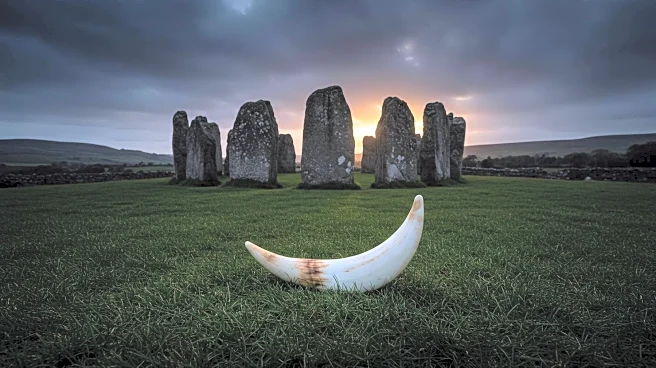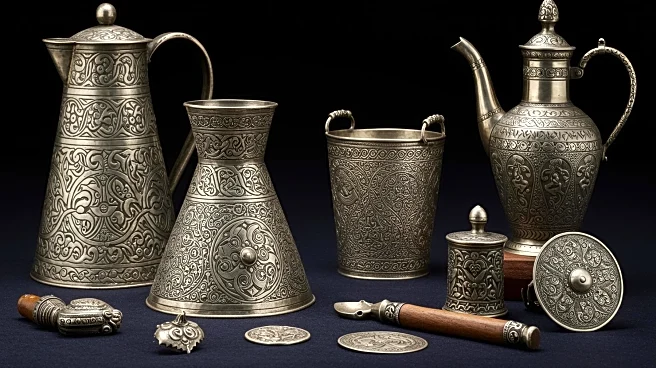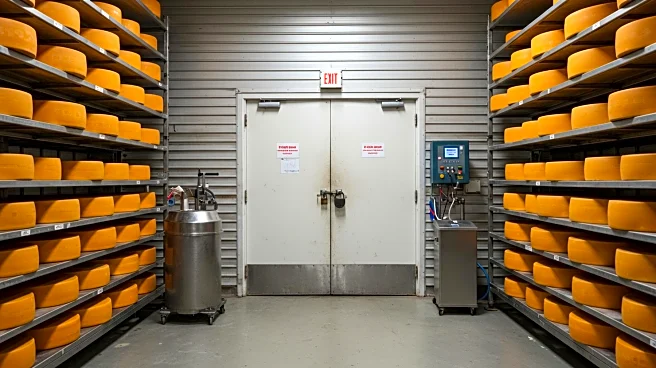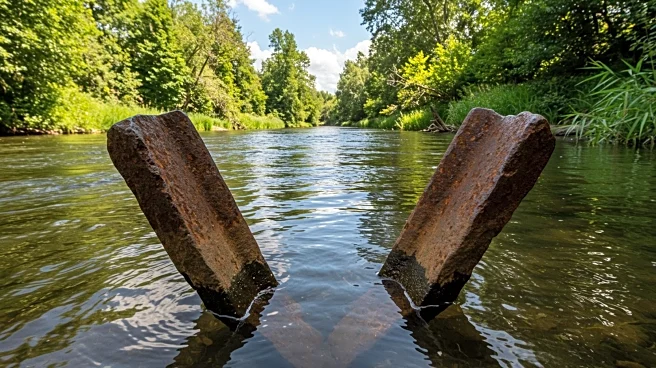What is the story about?
What's Happening?
Scientists have analyzed a Neolithic cow's tooth found at Stonehenge, revealing the animal likely originated from Wales. The tooth, discovered in 1924, was examined by researchers from the British Geological Society, Cardiff University, and University College London. The analysis involved slicing the tooth into sections to study the animal's diet and movement, providing evidence of links between cattle remains at Stonehenge and Wales during the time the bluestone megaliths were transported to the site.
Why It's Important?
The findings reinforce theories that cattle played a role in transporting Stonehenge's massive stones, challenging previous assumptions that humans alone moved them. This research contributes to understanding the construction methods of Stonehenge and the cultural connections between regions in Neolithic Britain. It offers insights into the social and economic dynamics of the period, influencing archaeological interpretations of prehistoric societies.
What's Next?
Further studies may explore additional cattle remains at Stonehenge to confirm the role of livestock in the monument's construction. Researchers may investigate other archaeological sites to identify similar patterns of animal use in ancient engineering projects. The study encourages interdisciplinary collaboration to deepen knowledge of Neolithic transportation and trade networks.
Beyond the Headlines
The research highlights the evolving narrative of Stonehenge's construction, emphasizing the importance of integrating animal studies into archaeological research. It underscores the complexity of prehistoric societies and the need to reassess traditional views on ancient engineering and resource management.
AI Generated Content
Do you find this article useful?












